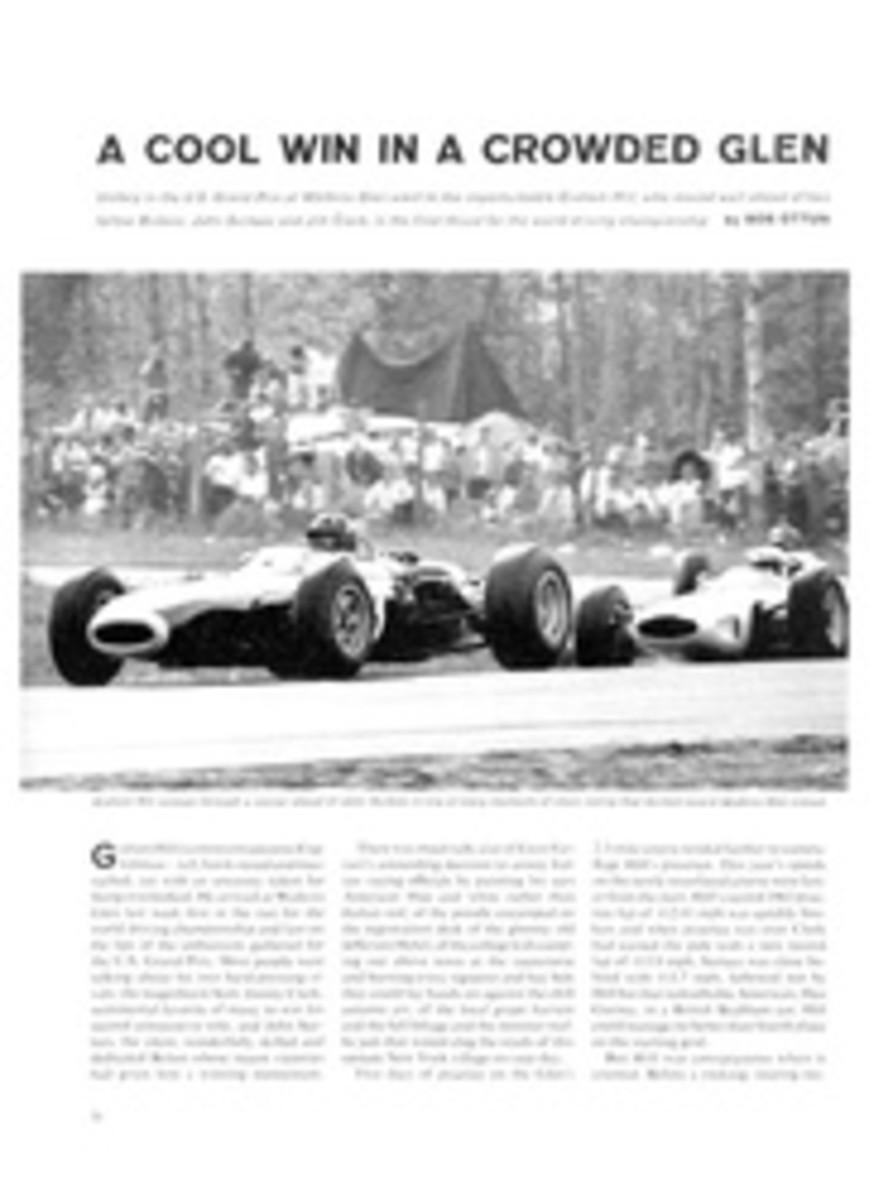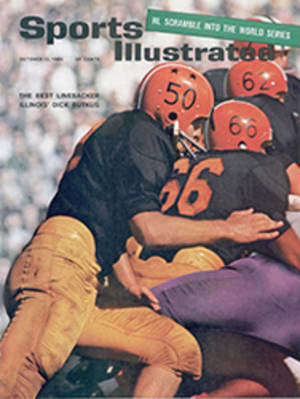
Jonas Brothers in Seattle use Fiberglas in a new and unique method of taxidermy
In one huge loft of Jonas Bros., Seattle taxidermists and furriers, two or three thousand wild animal pelts are strung up on long lines—big or little noses in the air, big or little tails sweeping downward, fur against fur, skin against skin, all tagged with names and numbers, and all exuding a pleasant, pervasive scent. It somehow suggests an oversize cloakroom in a primitive longhouse—on family night.
"Great bins on another floor, and an immense barn on Seattle's wooded outskirts, hold Fiberglas forms for every trophy species a hunter is likely to bag in North America, Africa or India. These are carefully "filed" under extra large, large, medium or small, subfiled under right face, left face or straight—and, in the case of complete mounts, according to stance.
Put the furs and the Fiberglas together, and you get—well, not exactly instant animals, but a unique contribution to taxidermy and the trophy room by the three Klineburger brothers, who bought out their employers, Jonas Bros., in 1954. Gene, 41, Bert, 37, and Chris, 36, operate one of the world's largest custom taxidermy businesses. It has branches in Uganda, Tanganyika and Alaska, numerous fur-receiving field stations, plus a guide-referral system (no charge for either of these services).
The Klineburgers will make for you or sell you beautiful fur rugs (for ski or hunting lodge, townhouse den, office or sports car) from as low as $20 for a little, short-haired skin to perhaps $225 for a big polar bear. They custom-make or sell mink coats, leopard (car coats, $3,450), Washington State muskrat (car coat, $295) and zebra (24-inch jacket with natural beaver shawl collar and elbow cuffs, $875). They will sell you enough zebra to cover your bar, whether it takes one skin ($75-$100) or a hundred.
But their true love is good, if not old, taxidermy. They have reconstructed everything from a hummingbird to a 23,000-pound killer whale. They originated the Fiberglas form, and they (and their staff of 50) are the only taxidermists, to their knowledge, who use it.
The combination of Klineburgers plus Fiberglas has made it possible to hang on your wall a nonanimal that you yourself shot: a completely synthetic head of an elephant, hippopotamus or walrus. If you have the tusks but the skin is damaged or lost, Jonas Bros. can mold and tint a head to the eye-fooling likeness of such almost hairless creatures. That gives you a base for displaying the tusks. But wait. For mounting, the true tusks are routinely recast in plastic. The original tusks can then be displayed casually nearby—alongside, with luck, an on-the-spot photo of you and the actual animal you shot.
All three Klineburgers have been hunters since they were children. They put themselves through school in Arizona by running trap lines and curing the skins of the beasts they caught. They and their wives have hunted in Mexico, the Arctic icecap and the African veld; they are regular commuters to the Yukon and Northwest territories. Bert Klineburger, president of Jonas Bros., holds the world's record for moose. Like all hunters, they want trophies to look real, rip-snorting or restless, and evocative of the climactic moment—even if what's inside is only [1/16] of an inch of Fiberglas.
Since the first hunter noticed that he had shot something larger than his neighbor's kill, men have stuffed animals (and also birds and fish) with earth, grass, leaves, straw and, later, excelsior. Originally they added spices in an effort to stave off decay. The development of preservative chemicals led to great 18th-century private and especially royal collections. Taxidermists studied exact measurements of the animal. They reconstructed skeletons, modeled them in clay to show musculature in action, then molded them in plaster of paris, reinforcing them inside with papier-m√¢ché, stiffened burlap or even wire cloth for large specimens. They tried molding them in wax or carving forms out of balsa wood or cork.
Though the Klineburgers have moved on to Fiberglas, they still urge hunters to take exact measurements in the field. But after modeling and casting thousands of animals, they hit on something: four basic sizes (of heads in most cases) could take care of each species "within a quarter of an inch"; additional differences in musculature stemmed mainly from position. Today in the big, windowed "studio" you can see the older European and more recently trained American "artists" adding bits of clay to the Fiberglas forms, deftly sculpturing them to fit the pelts they will wear; putting in plastic "dentures," rubber tongues and glass eyes made in Germany; pinning the furs into position while the glue dries and then fluffing up the fur like show-dog handlers.
The finished mount is "stronger, lighter in weight and more damp-proof than the old papier-m√¢ché method," according to the Klineburgers. A full-mount bear might weigh 135 pounds in papier-m√¢ché and 35 in Fiberglas. If it's a big polar or Kodiak brown bear, the job will run to $1,000 or even $1,200. Blacks and grizzlies, can be done for $600 to $800. A wolverine that weighed 35 pounds in life might weigh 10 in Fiberglas, with base. Wolverines and some other small mammals can be done for as little as $125; a dik-dik, not much bigger than a jack rabbit, for $95 to $115 full mount, $45 for a head. Wildebeest-or caribou-head mounts are about $125. A full-mount moose could run to $1,500.
African cargo boats bring big crates of salt-stiff pelts into Seattle for Jonas Bros. nearly every week. Most have been shot by North Americans. European and other hunters usually have their mounting done in the Uganda branch, where top Jonas Bros, taxidermists have gone to train African personnel. Americans do better to send raw trophies to Seattle because, for finished mounts, shipping costs and customs charges are high.
Plan ahead, the Klineburgers urge, so that a field man from Jonas Bros, can supervise the processing of the pelt from the very moment of the kill—whether by natives in Africa or Eskimos in the far north. Some pelts are frozen, some dipped in chemical preservative; the sooner they are so treated, the better for the appearance of the finished trophies.
Chris Klineburger pointed sadly at a big mounted polar bear, originally white but now showing a touch of jaundice. "All that yellowing could have been avoided," he said, "if the animal fats had been removed properly in the field. If we know a hunter's plans we can have any North American pelt frozen by one of our fieldmen, air-freighted and in our tanning process within two to five days."
After the frozen furs are thawed and the dried ones are water-reconstituted, everything but a chewing squaw goes to work to make them soft and workable. A man meticulously shaves an elephant skin from perhaps an inch thick to the ¼ inch proper for mounting; he uses, alternately, the traditional double-edged currier's knife and a modern electric-powered rotary blade. Natural fats are replaced, after the tanning and curing, with a mixture of lanolin and cottonseed oil. Then the pelts rumble-tumble around in big machine-driven barrels of eastern hardwood sawdust to take out dust and excess oil and break up the skin fibers (as the squaw would have done with her teeth). The salting, shaving and sawdust are nearly as old as taxidermy. The power tools and equipment, like the freezing, are new; so are the compressed-air-driven staples used instead of nails for mounting.
Jonas Bros, processes more than 2,000 head mounts a year (sheep, caribou, moose, etc.) and from 1,000 to 1,500 bears. Full bear mounts, especially rampant, are growing in popularity; newer is the half-mount, cut off at the rib cage, which seems to plunge out of the wall like an angry circus animal bursting through a paper drumhead. As the Klineburgers like to point out, it "saves space." But most bearskins still wind up. open-mouthed, as rugs. These cost the hunter about $20 per linear foot and average about $150. A little black bear might be $95, a big polar $225. You can have a more docile, hearth-happy bear (or other animal) snoozing before your fireplace, mouth respectfully shut, at lower rates. A four-skin wolf rug (approx. 4 feet x 8 feet) with black-bear border is $400.
Though some huntresses have furs made into garments, a woman is no more out to shoot a fur to wear than a man is out to shoot his dinner. "A woman is just as interested as a man in having her trophy on a wall," says Bert Klineburger. "Otherwise she wouldn't be hunting." For only $6.50, though, she could have a deerskin tanned and dressed, with or without hair. That equals one waistcoat or handbag, two pairs of moccasins or three pairs of gloves; four skins would make a man's jacket or a woman's belted coat.
For those who have some old elephant feet lying around, or happen to have bagged a five-footed specimen, Jonas Bros, will make one foot into a stool ($50). You can sit on it while you look across the room at a map of Africa, hand-painted in full color by a Jonas Bros, artist, or at an African elephant's ear ($150).

